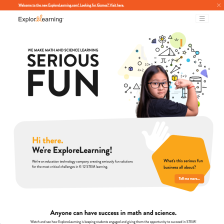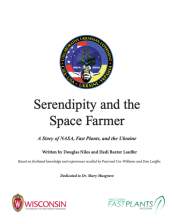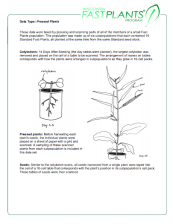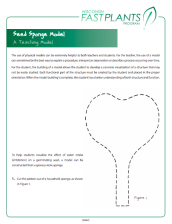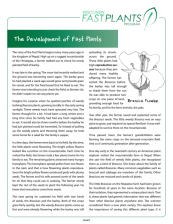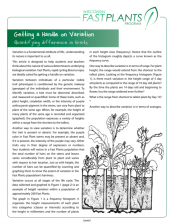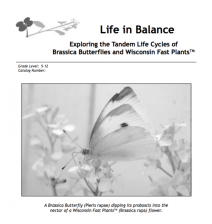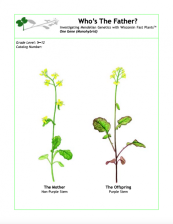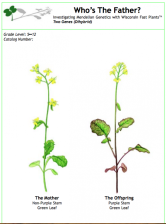Browse Resources
Educational Resources -- Grade Level: Secondary -- Current Secondary Resources
Resources | |
|---|---|
This resource, provided by Wisconsin Fast Plants and CurrikiStudio, contains a set of six different learning activities that can be implemented in classrooms to teach natural selection. Organized in playlists, these interactive lessons guide students through understanding and applying knowledge of...
Sign up for a free account on the Gizmo website (https://www.explorelearning.com/index.cfm?method=Controller.dspFreeAccount) for free access to two simulations that were collaboratively developed by the teams at Explore Learning and the Wisconsin Fast Plants Program of the University of...
Who knew that rocket science could have so much in common with botany and plant pathology? This is a human interest and science story that documents from firsthand accounts and artifacts the historical context and scientific events relevant to an important collaborative Fast Plant investigation on...
These data sets were meticulously collected by Dr. Paul Williams in an investigation in which we were interested in learning about how nutrient limitations effect a variety of easily observable and measureable Fast Plant traits. Observations were made and recorded at different points in the plants'...
This 2-page handout gives instructions for making the seed sponge model that was developed by the Wisconsin Fast Plants Program as a tool for learning about germination. Visualizing what is inside a seed and how those structures function during germination is modeled, using a simple kitchen sponge....
This is "The Story of Fast Plants" - a short story of the origins of Brassicas and the work of Dr. Paul Williams, developing Brassica rapa. Reading level ~7th grade.
This article is designed to help students and teachers think about the nature of various determinants underlying biological variation. Teachers facilitating any selection investigation will find this background information helpful, including those planning for the AP Biology Lab 1 of Big Idea 1:...
This fill-in-the-blank timeline is a planning tool for teachers to use when figuring out when to begin the steps associated with conducting a two-generation artificial selection experiment using Fast Plants. Teachers preparing for any selection experiment will find this timeline helpful, including...
Download this complete unit of instructions to conduct an ecosystem inquiry. In this investigation, students have the opportunity to witness first-hand the dynamic relationship between Brassica butterflies and Wisconsin Fast Plants. Students are responsible for tending the butterflies and plants...
In this investigation, students will gather their own evidence to explain how inheritance works. As they observe three generations of Wisconsin Fast Plants, students will unravel a mystery of paternity: What is the father’s phenotype? Is it the same as the mother’s phenotype or the offspring’s...
Download the complete instructions for a high school level inheritance inquiry, using Wisconsin Fast Plants. In this investigation, students gather their own evidence to explain how inheritance works. As they observe three generations of Wisconsin Fast Plants, students unravel a paternity mystery:...
A 32-page booklet, containing complete instructions for activities at each life cycle stage. The booklet also includes important background information about plant physiology and how to grow Fast Plants. A Growth, Development and Reproduction kit is available. You can also conduct all the...
| |
| ← Previous | |

